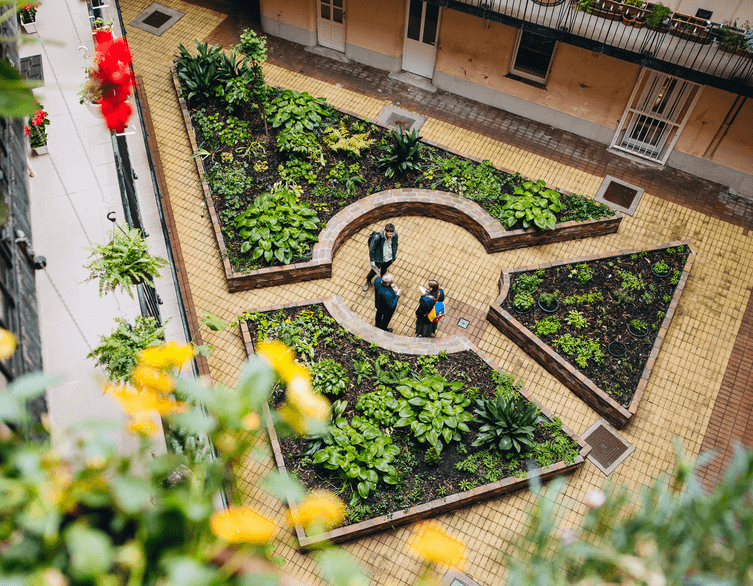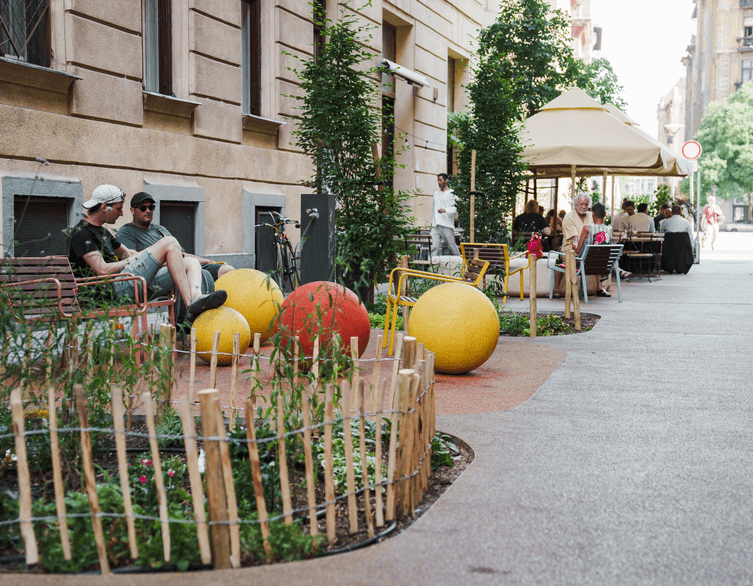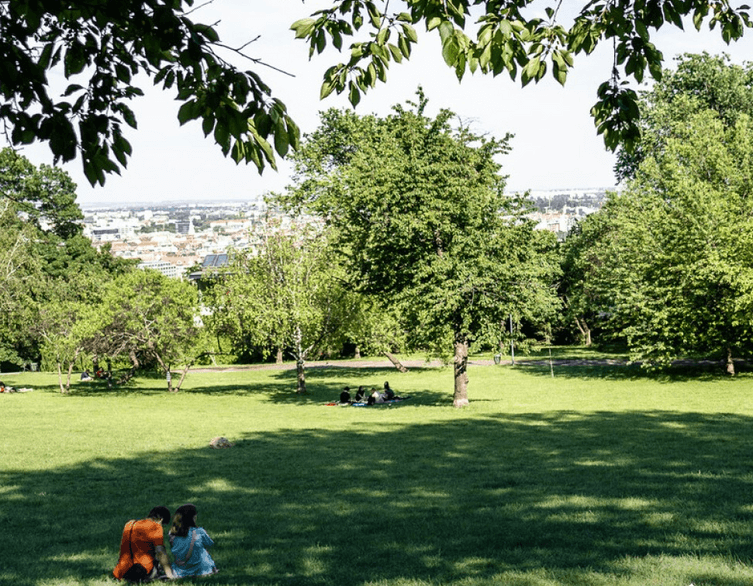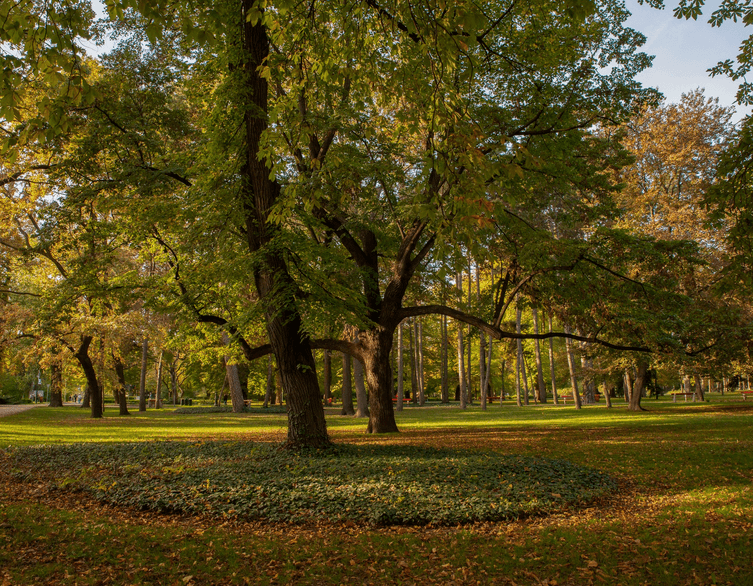Budapest’s Neighborhood Gardens Are Transforming the City

From Concrete Courtyards to Urban Oases
Budapest is quietly undergoing a green transformation, and it’s happening right in the heart of residential neighborhoods. This November, the city council unanimously approved funding for two major initiatives aimed at turning grey concrete spaces into flourishing community gardens. For visitors exploring Budapest, these projects reveal a side of the city that goes beyond grand monuments and thermal baths—they showcase a grassroots movement where residents are reclaiming their living spaces, one courtyard at a time.
The two programs driving this change are the Égig Érő Fű (Sky‑High Grass) courtyard greening initiative and the Lakótelepi Zöldfelület‑gondozási Pályázat (Housing Estate Green Space Program). Together, they represent a new chapter in urban planning, where community involvement meets environmental action. With a combined budget of 130 million forints for 2026, these programs are reshaping Budapest’s residential landscape—and proving that even the most densely built neighborhoods can bloom.
The Sky‑High Grass Initiative: Six Years of Urban Greenery
The Égig Érő Fű program launched its sixth season this year with renewed ambition. Designed specifically for older apartment buildings with interior courtyards—typical of Budapest’s dense inner districts—the initiative offers financial support to residents who want to transform their neglected spaces into vibrant green retreats. The funding has doubled this year to 80 million forints, with individual grants ranging from 800,000 to 3.5 million forints per building.
What makes this program special is its community‑driven approach. Residents don’t just receive money and instructions—they collaborate on design, share ideas, and work together to bring their vision to life. The result is not only greener courtyards but stronger neighborhood bonds. Where once there were silent nods in stairwells, now there are shared gardening days, weekend BBQs, and genuine connections.
Best deals of Budapest
Over the past five years, countless Budapest courtyards have been reborn. Dingy carpet‑beating frames and cracked pavement have given way to flowering shrubs, climbing vines, and shaded seating areas. The program prioritizes native plants, sustainable materials, and biodiversity, encouraging residents to create habitats for birds, bees, and butterflies. The transformation isn’t just aesthetic—it’s ecological, social, and deeply personal.
The Housing Estate Green Space Program: Bringing Nature to the Outer Districts
While the Égig Érő Fű program focuses on Budapest’s historic inner neighborhoods, the Lakótelepi initiative targets the large housing estates that dominate the city’s outer districts. Built during the socialist era, these towering apartment blocks were constructed with green space requirements, but over the decades, the quality of those areas has deteriorated. Grass patches turned to weeds, playgrounds rusted, and communal areas became neglected.
The Lakótelepi program, now entering its third year, aims to reverse that decline. With a significantly increased budget of 50 million forints—more than quadruple the original allocation—it supports resident groups who want to restore and improve the green spaces surrounding their buildings. Grants range from 100,000 to 500,000 forints per housing block, covering everything from planting trees and installing raised garden beds to organizing community gardening events.
This initiative isn’t just about beautification. As Budapest’s chief landscape architect, Bardóczi Sándor, has emphasized, communal gardening provides “life energy not only for the eyes but for the body and soul, making a long and active life more achievable.” It’s a recognition that green spaces are essential to physical and mental health—especially in densely populated urban areas where nature can feel distant.
Why These Programs Matter for Budapest’s Future
Budapest’s inner districts are among the most densely built areas in Europe. During the summer months, these neighborhoods become urban heat islands, with temperatures soaring and air quality declining. The lack of green space doesn’t just make the city uncomfortable—it poses real health risks. By transforming courtyards and communal areas into green zones, these programs help cool the city, improve air quality, and create pockets of biodiversity.
But the benefits extend beyond the environment. The greening initiatives foster community pride and participation. Residents who might never have spoken to each other find themselves working side by side, planting flowers, building benches, and dreaming up new uses for shared spaces. These projects turn anonymous apartment blocks into real neighborhoods, where people know their neighbors and care about the spaces they share.
For visitors, these transformations offer a glimpse into everyday Budapest life. Walking through neighborhoods like Józsefváros or Ferencváros, you might stumble upon a hidden courtyard filled with roses and tomato plants, or notice a previously barren housing estate now dotted with vegetable gardens and murals. These spaces tell a story of resilience and creativity—proof that cities can change from the ground up, one garden at a time.
How the Programs Work
Both initiatives are designed to be accessible and community‑focused. Applications open early in the year, with deadlines set for late March. Residents submit proposals outlining their vision, including site photos, budget estimates, and descriptions of planned activities. Priority is given to projects that demonstrate strong community involvement, ecological sensitivity, and creative design.
The funding is post‑financed, meaning residents cover costs upfront and are reimbursed once work is completed. A minimum 10 percent contribution from participants ensures buy‑in and shared responsibility. Grants can be used for plants, soil, tools, irrigation systems, and even community events like neighborhood garden parties. What they can’t fund are harmful chemicals, excessive concrete installations, or professional gardener fees—ensuring that the work remains hands‑on and sustainable.
Support doesn’t end with funding. The city provides free consultations, design resources, and technical guidance. Experienced landscape architects help residents navigate the process, and past participants share lessons learned. The goal is to empower residents, not just subsidize projects.
A Model for Cities Everywhere
Budapest’s greening programs have drawn attention from urban planners across Europe. In an era when cities face mounting environmental challenges, these initiatives offer a blueprint for sustainable, community‑driven change. They prove that you don’t need massive budgets or top‑down mandates to transform urban spaces—you need trust, support, and a willingness to let residents lead.
For tourists visiting Budapest, these green spaces add depth to the city’s charm. Beyond the Danube panoramas and historic monuments, you’ll find neighborhoods alive with color, fragrance, and the quiet hum of community life. Whether it’s a vine‑covered courtyard in the Jewish Quarter or a thriving vegetable garden in a suburban housing estate, these projects reveal a Budapest that’s constantly evolving, rooted in tradition but growing toward the future.
Related news























